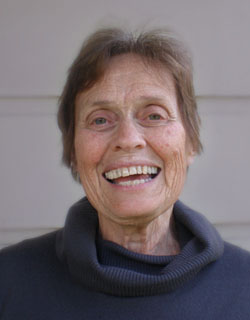Celebrating the 21st birthday of the DTAA
July 10-12, 2015
The Historic Abbotsford Convent, 1 St Heliers Street, Abbotsford, Victoria, Australia
Hanny Exiner Memorial Address
 Elizabeth Loughlin (MA, B.Litt Hons (Perf Arts), Dip Soc. Studs, Dip DMT, Prof Member DTAA).
Elizabeth Loughlin (MA, B.Litt Hons (Perf Arts), Dip Soc. Studs, Dip DMT, Prof Member DTAA).
Elizabeth has worked for more than 20 years as a social worker/dance therapist in the area of chronic health conditions, and as a dance therapist with vulnerable mother – infant dyads, in two of Melbourne's major metropolitan hospitals. She trained in dance therapy at the International Dance Therapy Institute of Australia, and completed her Masters in Creative Arts Therapy (La Trobe) with phenomenological research on issues in Turner Syndrome. She has been part of the hospital psychology team that treats and researches interventions, including DMT and creative play, for mothers with post natal depression and their infants. She present regularly at health conferences, teaches in the hospital training program on mother-infant interaction and has published on DMT with her two populations.
Speaking In Our Own Voices: Negotiating The Space Between
The inspiration and starting point for this keynote address is a story told by a young American dance therapist, a story which seemed to me to encapsulate key aspects of the experience of dance therapists everywhere: firstly the lack of recognition of dance therapy as serious professional practice and secondly the difficulties we dance therapists face in speaking our 'truth' to others. While we see every day the value of the work of dance therapy, we continue to feel in some way lesser than other professionals, constantly needing to prove that what we do has value. I introduce the concept of ideological hegemony, which suggests that the dominant paradigm or world view sets the agenda for what is valued and what is not. Thus it may well be that lack of professional recognition has less to do with lack of evidence and more to do with the fact that dance therapy lies outside the dominant biomedical paradigm. Far from seeing this as a cause for despair, I suggest that we use this awareness to put our energies into strengthening our profession through good practice, peer support, writing, and appropriate research. In talking in our own voices, from our own truth, we have a strong base from which to reach out and negotiate the space we share with others.
The Arts, the Outcomes and the Liminal Space
This presentation discusses a pathway for dance therapy: Finding the specific actions of the arts that can support vulnerable clients to wellbeing and therapeutic change; defining the territory for dance movement therapy in the multidisciplinary team; contributing observations of client playfulness and movement experiences to widen the understanding of health professionals; and developing partnerships with allied health professionals to participate in evaluation and evidence-based research.
